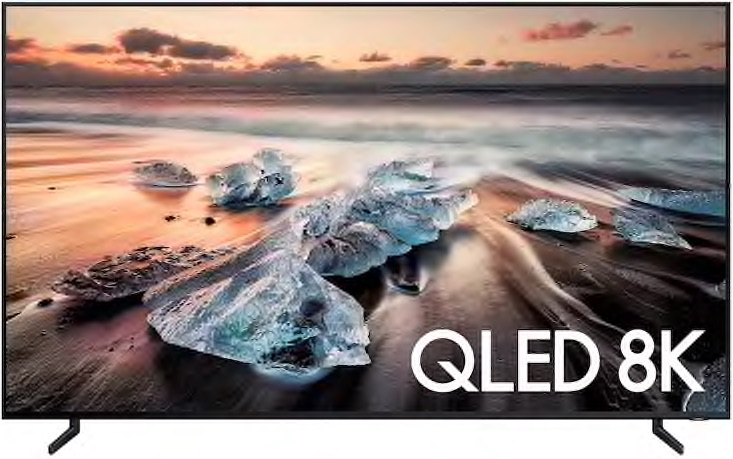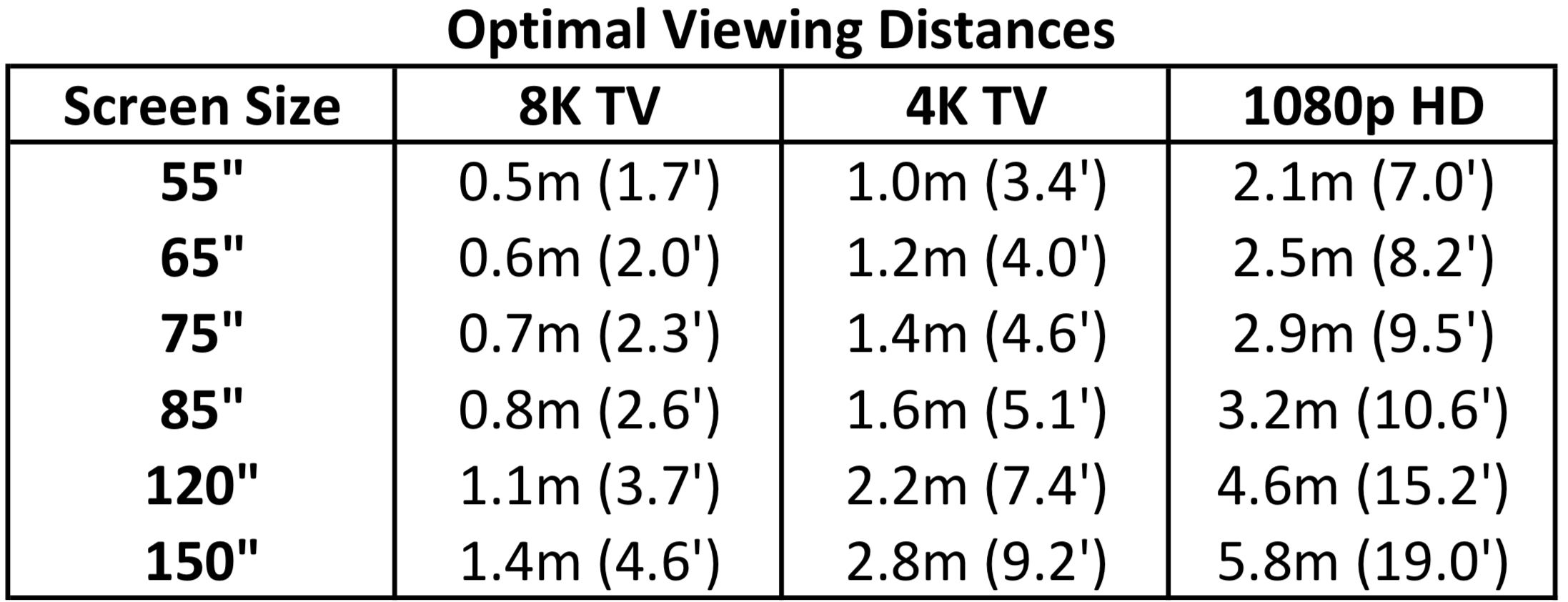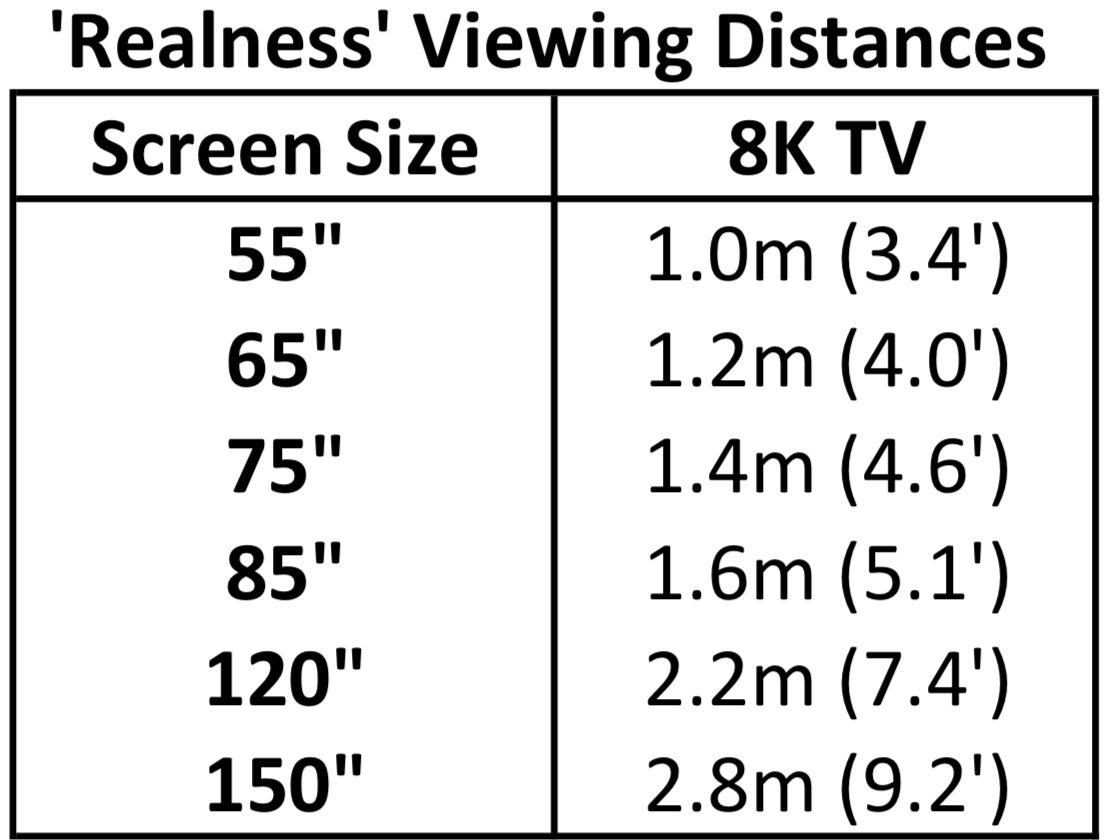 Ready or not, 8K TV is here. Samsung is shipping them to the masses, and LG and Sony will ship later this year. If you’re still a bit fuzzy on 4K TV, then here’s what you need to know about 8K TV and if you should get one.
Ready or not, 8K TV is here. Samsung is shipping them to the masses, and LG and Sony will ship later this year. If you’re still a bit fuzzy on 4K TV, then here’s what you need to know about 8K TV and if you should get one.
Pixels, pixes, pixels
One of the main features pointed out by TV manufactures is the number of pixels, or the little bits of the TV that make the picture. There’s no argument that when we went to HDTV from standard definition TV that the picture got clearer and had more detail. Old standard TVs had about 640 x 480 pixels and 1080p HDTV has 1,920 x 1,080 pixels. Now we have 4K with 3,840 x 2,160 pixels and 8K touting 7,680 x 4,320 pixels. That’s lots of pixels, but what’s lost in resolution specs is what’s actually needed.
The human eye can only distinguish so much detail though. But before we get into that, there are basically two streams of thought for viewing TVs. For the movie industry (e.g. THX), they want a screen to fill your field of view; i.e. to immerse you into the video content. For most of us, we view much smaller screens; often from a living room couch.
Viewing distances
The fact is, if you’re far enough from a screen, it really doesn’t matter if you’re watching an 8K TV, 4K TV or even an HDTV. For an example 55” 8K TV, the ‘optimal’ distance would be 0.5m (1.7’). For a 55” 4K TV, this goes to 1.0m (3.4’). And for 55” 1080p HDTV, they recommend sitting 2.1m (7’’) away. Although everyone’s vision varies (and distances), it’s a safe bet to assume that most people are more than 2m away from their TV, so they could get away with an HDTV for this 55” TV example (in terms of pixels, anyway). Of course, for really large TVs and home theatre screens, the higher resolution (more pixels) might make sense.

To complicate things, the smart people at NHK (Japan’s standard setting broadcast company), show that with the right brightness and lighting conditions, 8K TV viewing distances need to be adjusted when you take ‘realness’ into account. Basically if you show people an object on an 8K TV compared to a real object, people notice the difference even when viewing farther away. You can read more, but it comes down that for realness, 8K viewing distances are the actually twice the distance vs. if you only take discerning pixels into account. Either way, it’s unlikely many of us will be sitting that close in a more casual viewing situation like our living room.

But that is not the full picture (sorry, pun intended).
Latest features
Like with 4K, 8K TVs will come with picture quality improvements. Since 8K TVs will be their flagship models, manufacturers will make them with their best colour reproduction technology and best brightness. They’re also using spiffy processors in their higher-end TVs that make all content look better. This is handy as there is little 4K content let alone 8K content to watch. NHK will be broadcasting the Tokyo 2020 Olympics in 8K, so we might get some if that content though.
Samsung suggests that by getting their latest 8K TV you’ll be future proofing your system for, well, the future. That sounds good, but early buyers of 4K TVs got bitten when HDR and HDMI 2.1 got properly figured out after they bought their TVs. Early adopters are often at risk with technology.
What to do, what to do
If you have the money and need a really, really big TV, then it might be time to get an 8K TV or 8K projector. Like 4K, there may be updates in features and compatibly though, so there is risk. As 8K prices comes down, they will be become more common and accessible for all buyers. As with 4K TVs today, to get a better TV, you’ll soon likely be looking at a 8K TV. Even if the number of pixels isn’t important for your situation. For example we usually recommend 4K TVs regardless of viewing distance, as the overall viewing quality and features are so much better than HDTVs. The same will eventually be true for 8K TVs as well.
